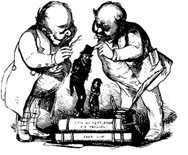
Briefly Reviewed: March 2025
Resistance from the Right: Conservatives & the Campus Wars in Modern America
By Lauren Lassabe Shepherd
Publisher: University of North Carolina Press
Pages: 280
Price: $29.95
Review Author: Alex Pinelli
Have you ever wondered what it would be like to read a nonfiction book written by someone who loathes her subject? A few fanciful examples would be Donald Trump: A Political History by Hillary Clinton or The History of British Petroleum by teenage climate activist Greta Thunberg. Resistance from the Right: Conservatives & the Campus Wars in Modern America by Lauren Lassabe Shepherd does for conservatism what you would expect Clinton and Thunberg to do for Trump and BP, respectively.
Shepherd, an instructor of higher education at the University of New Orleans, offers readers an overly simplistic and completely biased look at conservatism. This is a shame because the topics she covers, such as how conservative students organized on college campuses during the late 1960s and the tools they used to advance their agenda, deserve closer inspection. But the point of Shepherd’s book, as she states, was never to bring greater understanding to a central political and cultural movement in American history. Rather, its overall aim is to warn an unsuspecting populace that “liberals and progressives have generally failed to take the Right’s self-aggrandizing seriously,” and because of this, the Right has “committed to slashing liberal institutional powers to satisfy their preferences and seal their own advantages.” Put in simpler terms: Liberals need to understand just how sinister conservatives have always been and the danger they continue to be. This makes for a truly arduous read.
Yet, this is nothing new. Shepherd is merely building on a sizable but faulty foundation. For a historical perspective, she leans heavily on Nancy MacLean’s view of conservatism in Democracy in Chains: The Deep History of the Radical Right’s Stealth Plan for America (2017) as a bulwark for the wealthy against the lower rungs of society for the sole purpose of retaining political power and high socioeconomic status. She also incorporates Corey Robinson’s The Reactionary Mind: Conservatism from Edmund Burke to Donald Trump (2018) to try to understand the psychology underlying conservatism. Robinson largely echoes MacLean but argues that conservatism is an antagonistic movement in the sense that it simply reacts to social or political movements that could possibly usurp any power from conservatives in positions of authority.
It is through this lens that Shepard views conservatives and their organizations on college campuses in the late 1960s. She establishes little to no connection with conservative interviewees. Sometimes she quotes them, but she never fully examines their perspective and does not take their side of the story seriously. On the other hand, she depicts the New Left and the Black Power movements as pugilistic martyrs, fighting for a more equitable and just society, only to be thwarted by “white supremacists and Christian nationalists.” But it is not the tired and worn depictions of liberals as saintly figures and conservatives as the embodiment of evil that make this a poor work of history. No, it is the blatant and repeated falsehoods passed off as facts that display a lack of understanding and make the entirety of the work shameful.
For example, Shepherd attempts to upend and reclassify a unifying principle of a diverse and fluid conservative movement: anti-communism. She argues that anti-communism does not really mean opposition to communism but is better termed “anti-liberalism,” which to her equates with racism. The presentism she displays here is glaring. If that’s not enough, in her conclusion she takes us further down the rabbit hole. “Instead of uncritically accepting the Right’s coded framing,” she writes, wherein anti-communist means anti-communism, “we should plainly state what was meant by their anticommunism: a wholesale rebuke of pluralism.” This is utterly ridiculous, but when someone wants to put a thumb on the scales of history and views the past through the eyes of the present, such errors will abound.
Like many who claim that conservatives capitalized on racism to make political gains, Shepherd contends that racism and white supremacy were and continue to be a central tenet of American conservatism. She claims that “standing against the emancipation of oppressed groups to preserve a traditionalist racial hierarchy” was a central goal of college conservatives. But Shepherd again and again cites facts that contradict this, such as how support for George Wallace, to whom she points as the de-facto leader of right-wing racists, for president in 1968 “never reached above 4 percent nationally” and “was nonexistent” among the leadership of Young Americans for Freedom. She acknowledges that William F. Buckley and Frank Meyer did not consider Wallace a real conservative, and segregationist groups did not consider themselves conservative. Despite this, she ties the Right to white supremacy.
Shepherd’s scholarship and expertise seem to lie outside the history of 20th-century American conservatism and higher education. Attempting to deal with a topic about which she is woefully unknowledgeable turns a viable and interesting subject into a travesty. A simple remedy would have been to read Russell Kirk, Richard Weaver, Friedrich Hayek, Ludwig von Mises, Roger Kimball, something from Buckley besides God and Man at Yale, and Roger Scruton, or to take advantage of historians like Donald Critchlow, George Nash, or Lisa McGirr, instead of adding their names in the bibliography to feign due process. The one conservative historian she does mention by name speaks volumes.
Nicole Hemmer, a respected historian of conservatism and author of Partisans: The Conservative Revolutionaries Who Remade American Politics in the 1990s (2022; reviewed in the April 2023 NOR), argues that modern conservatism has drifted from a middle-of-the-road stance typified by Ronald Reagan and Buckley to a more populist, even fanatical nationalism exemplified by Trump. Yet, for Shepherd, this is far “too charitable” or “nostalgic” because it lets conservatives off the hook. Instead, she believes, the world needs to know that at no point in their history were conservatives redeemable. They have always been and will always be selfish racists.
Though I cannot recommend this book, I can offer some titles that fill the void for those interested in this topic. A Generation Divided: The New Left, the New Right, and the 1960s by Rebecca Klatch (1999) is a work of sociology that uses a wide array of interviews from college groups on both the Left and the Right to explore the divide in 1960s college culture. The Other School of Reformers: Conservative Activism in American Education by Adam Laats (2015) is an even more well-rounded work that examines a wider timeline, from the 1920s to the 1970s. Best of all is Cadres for Conservatism: Young Americans for Freedom and the Rise of the Contemporary Right by Gregory L. Schneider (1998), which zeros in on and depicts the development of Young Americans for Freedom from 1964 to 1980 in a pleasurable and meticulous way.
©2025 New Oxford Review. All Rights Reserved.
To submit a Letter to the Editor, click here
You May Also Enjoy
Her character and life epitomize an ideal of sainthood essential for a modern world suffering a crisis of the family and the deconstruction of the home.
We must heed the imperative of the Great Commission and turn our attention to where the harvest may prove bountiful: in the forums and threads of social media.
At times Christian writers have entered that exclusive realm where profound insight into the wisdom of Christianity joins artistic merit to produce fiction of a higher order.

